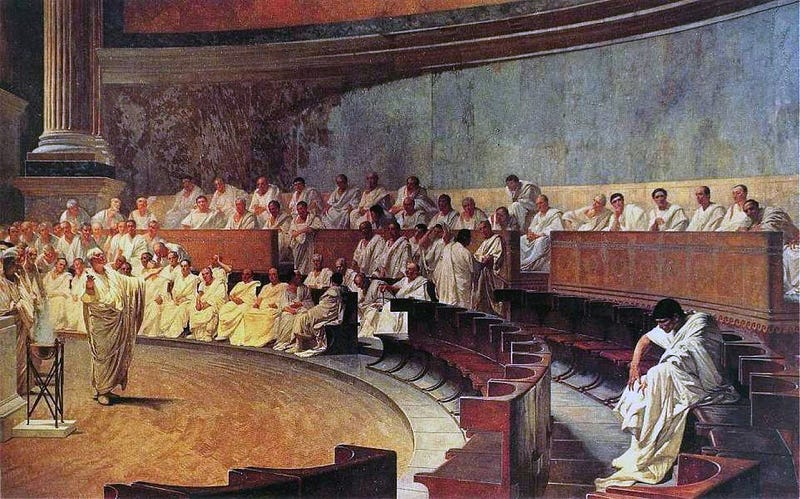 |
| Painting depicting Ancient Rome’s Senate |
I wrote this short essay on a whim: is it possible to reduce the concept of “good governance” to its most succinct components such that a severely distracted millennial could comprehend it instantly and even perhaps make something of it all? What follows is my take. You be my judge.
I remember a time when the term ‘good governance’ was being thrown around a lot. Often it was used as a placeholder for modern liberal democratic states, classically thought of as the pinnacle of human civilisation and progress. Indeed, that may be so but are all nascent liberal democracies destined to a life of prosperity? The evidence is shaky at best, non existent at worst. Perhaps it is no wonder then that the original term seems to have died a quiet death over the turn of the last decade.
Good governance these days seems to live up there with the rest of the world’s pies in the sky. People are on the lookout for something different, if the election of Trump is anything to go by. It’s unfortunate that things have turned out this way. Good governance is still arguably important to all of us, despite the up tick in global cynicism towards institutions that can potentially support it. However, perhaps the idea is in need of rejuvenation, now more than ever, before it can become a rallying point for good, honest people to build awesome and relevant institutions again.
So, first off, what exactly constitutes good governance any way? Depending on who you talk to, good governance abides by several principles such as accountability, transparency, citizen participation, efficiency and responsiveness in giving service, rule of law, and inclusiveness. So far so good, but can we make all this any simpler? Let’s start from the perspective of people.
If people cannot natively sense that they are benefiting from an institution’s presence and activities, then the stage is all set for a reset in the form of tumultuous, revolutionary resets. The key thing then is obvious: a structure that does not serve cannot sustain its own existence, or the people who depend on it for that matter. So, through reasoning, we can conclude that defined, efficient structures that actually meet demand with all the trappings of good governance are desirable. Great!
However, structures are only as good as the weakest link in them and the weakness stems from, again, people. This weak link emerges in the form of general illiteracy and the general inability to comprehend the structure, not only for the purpose of using it, but also for the purpose of improving. You cannot make progress with a mechanism you cannot comprehend, let alone try to comprehend without access to basic cognitive support (education, open knowledge, rigorous, open public discourse, open information networks, open tools, etc).
Therefore, from the above we identify two main components that need to be in place in order to even begin to implement good governance: a defined structure that can be documented in an open manner, is agreed upon and understood by every stakeholder to the maximum, and lends itself to renewal through intelligent, informed self-amendment by ALL involved stakeholders (I default to the belief that that which may affect all must be decided by all). Structure and knowledge; these, I would therefore argue, are the very foundations of good governance at any level of human organisation.
No comments:
Post a Comment